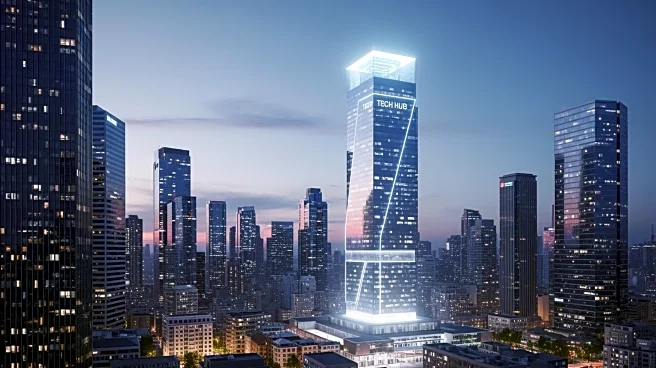What's Happening?
Strong by Form, a Chilean startup, is showcasing its innovative ultralight engineered wood product at TechCrunch Disrupt 2025 in San Francisco. The company has developed a structural floor piece that can replace traditional materials like steel and concrete,
offering a lighter and less carbon-intensive alternative. This new product is designed to span longer distances than existing engineered wood, making it a viable option for architects aiming to design more sustainable buildings. The product maintains the familiar appearance of cross-laminated timber (CLT) slabs, ensuring ease of use for contractors. Inside, the structure is optimized with cavities and wood shavings pressed into a wavy board to bear heavy loads. Strong by Form is also working on a thinner panel for non-structural applications, such as train interiors.
Why It's Important?
The introduction of Strong by Form's ultralight engineered wood could significantly impact the construction industry by reducing the carbon footprint associated with building materials. As buildings contribute to 11% of global carbon emissions, this innovation offers a sustainable alternative that could help mitigate environmental impact. The product's lighter weight could lead to cost savings in construction by reducing the need for steel and concrete in building frames. This development aligns with the growing trend of using timber in construction to achieve more eco-friendly buildings. If widely adopted, it could drive a shift towards more sustainable building practices, benefiting both the environment and the construction industry.
What's Next?
Strong by Form plans to raise a Series A funding round of $10 million to establish a pilot plant for commercial production of its engineered wood products. The company is currently testing its 10-meter panels to meet fire and load ratings required by structural engineers. As the startup continues to develop and refine its products, it aims to achieve price parity with concrete, making its sustainable wood solutions more accessible to the construction industry. The success of these efforts could lead to broader adoption of engineered wood in various construction projects, further promoting sustainable building practices.













